What is Asset Management?
Asset management is an important function that helps to guarantee that the operational performance of assets can be optimized and that they stay reliable. Asset lifecycle management helps in having improved control over asset health, and it forms the basis of asset management in business. Organizations that have multiple expensive and complex assets require enterprise asset management. Construction, defense, manufacturing, oil and gas, space, and such industries are the ones that require EAM, and asset management software.
The lack of proper asset management processes and/or software can give rise to heavy expenses for repairs and maintenance of assets, and lead to confusion regarding their status, the requirement of assets for the organization, and so on.
Advantages of Asset Management Software
Some businesses maintain manual records of their assets.
However, manual records are subject to several shortcomings like redundancy of data, missing information, errors in recording, capable of being manipulated for fraudulent purposes, and so on.
You need an employee in charge of this activity, making sure the records are updated immediately when there is any change in the status of the assets.
Asset management software from Tranquil provides the following advantages:
- It is accurate and eliminates the possibility of human error
- It consolidates data, avoiding the need to sift through volumes of data to get the information you want
- It can display detailed information regarding individual assets like manuals, warranties, history of maintenance, repairs, breakdowns, and transfers, etc.
- Asset management solution helps save time and effort on the part of your employees
- Relevant information about assets can be shared across departments, to all team members who need the information.
- The software can be configured to send alerts for scheduled maintenance service and inspection, preventing sudden breakdowns that can pause production.
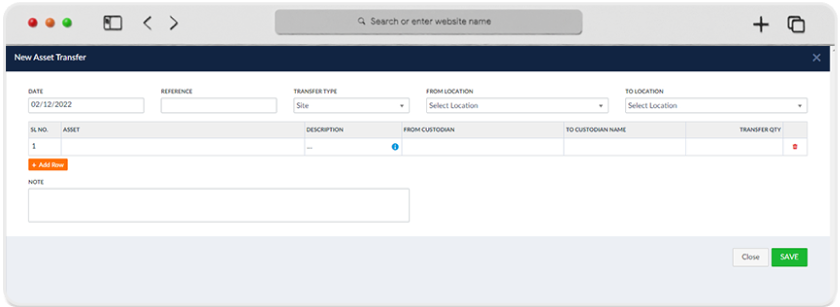

Assets like industrial equipment often need to be transferred within the organization. Tranquil lets you track your asset as you transfer it to a different site, department, or custodian.
For example:
- Sites – Moving an earth mover from one site to another when a new project starts
- Department – Transferring a few computers from HR to Accounts
- Custodian – Leaving a cement mixer in the charge of a new employee as the older one retired or got promoted.
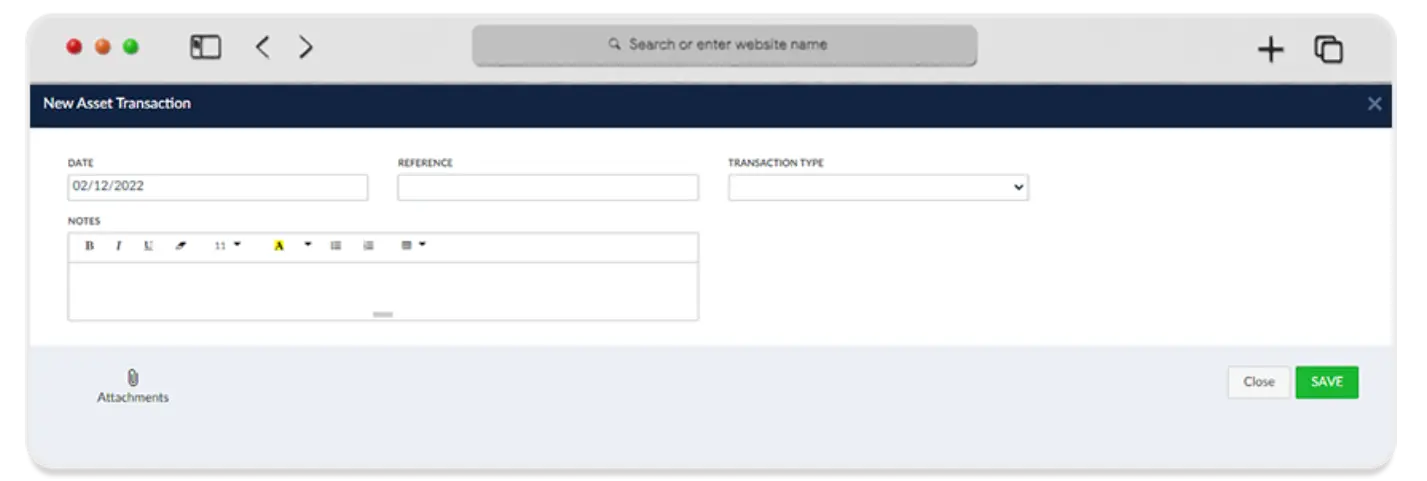

Tranquil asset management solution helps you monitor the asset throughout its lifecycle, from purchase to disposal and everything in between.
- Purchase: Record all details of newly purchased assets, their warranty periods, proposed dates of maintenance, and so on.
- Damage: Note down details of assets that are damaged beyond repair, and hence is unusable.
- Disposal: An asset may be sold for various reasons like end of lifecycle, damage, obsolescence, and so on. Tracking these assets and their details allows you to know what needs replacing, and how much value you derived from them.
- Depreciation: Every asset is subject to depreciation in its lifetime due to wear and tear. Automatically calculate depreciation each year, and comply with tax regulations.
- Re-Evaluation: Various market conditions may cause the value of certain assets to rise or fall – especially real estate. Stay on top of dynamic market trends and industry innovations and re-evaluate your asset value accurately.
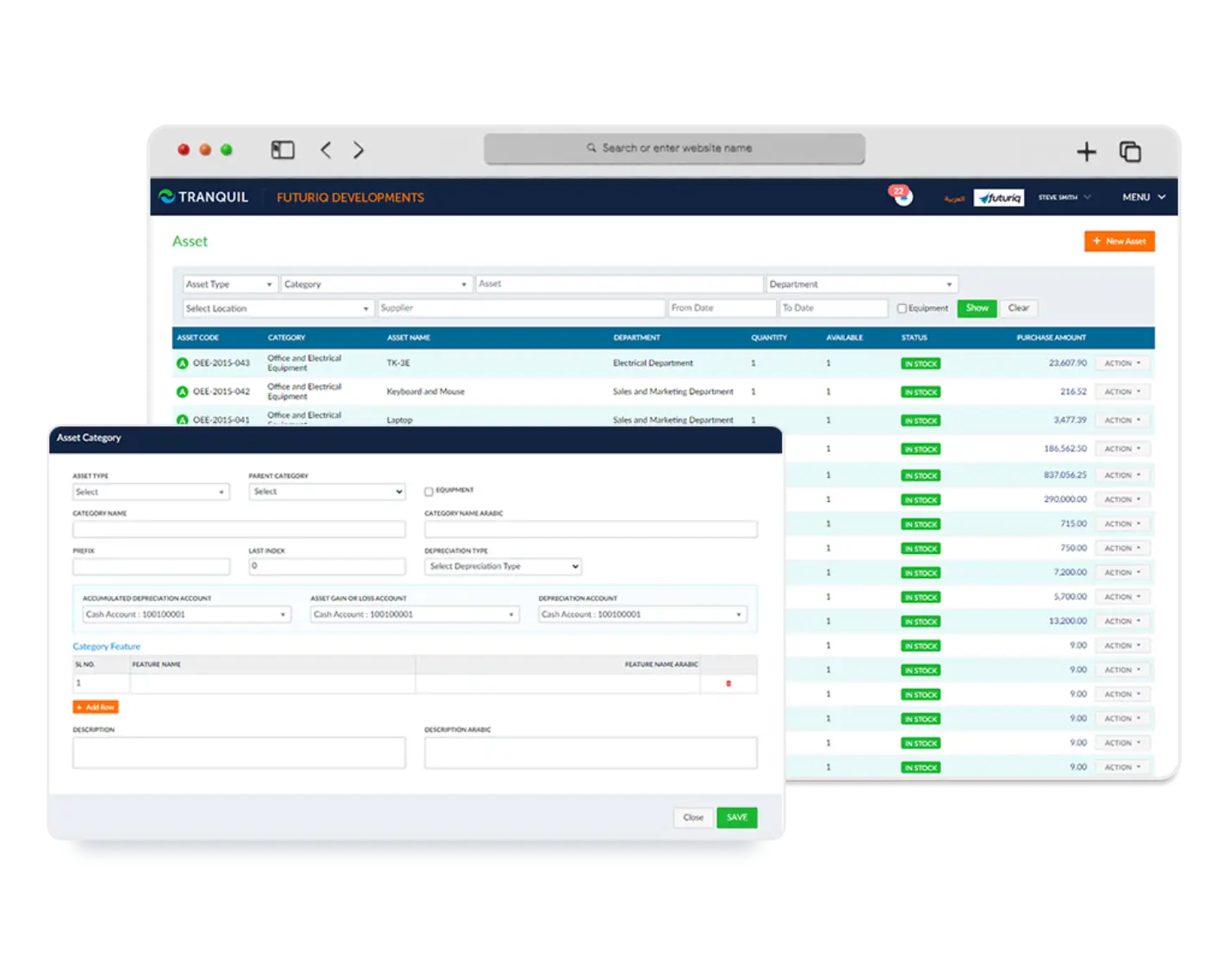

Assets represent ownership, have economic value, and help generate revenue for the business.
Fixed assets are of two broad categories – tangible and intangible.
Tangible assets are physical assets like office equipment, industrial machinery, furniture, vehicles, real estate property, and so on.
Intangible assets are those which cannot be seen but are essential to a business, like goodwill, patents, licenses, trademarks, and so on.
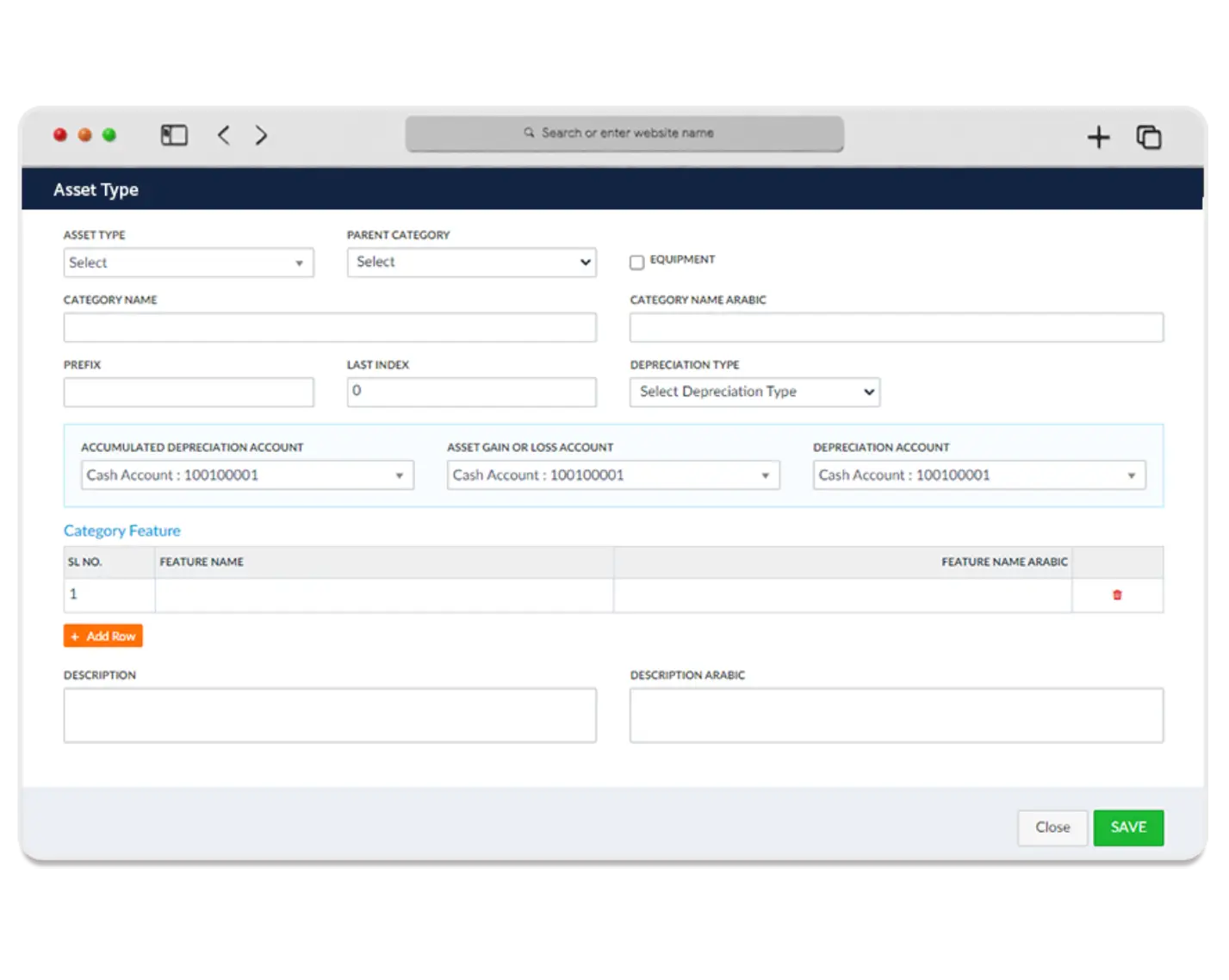

Divide your tangible assets into different types for easy maintenance.
Asset types include:
- Electronic equipment – laptops, printers.
- Production equipment – extruders, molds, cement mixers, other machinery.
- Real estate – warehouses, factories, office space, plots.
- Office equipment – furniture, software.
- Inventory – raw materials, components, work in progress, finished goods.
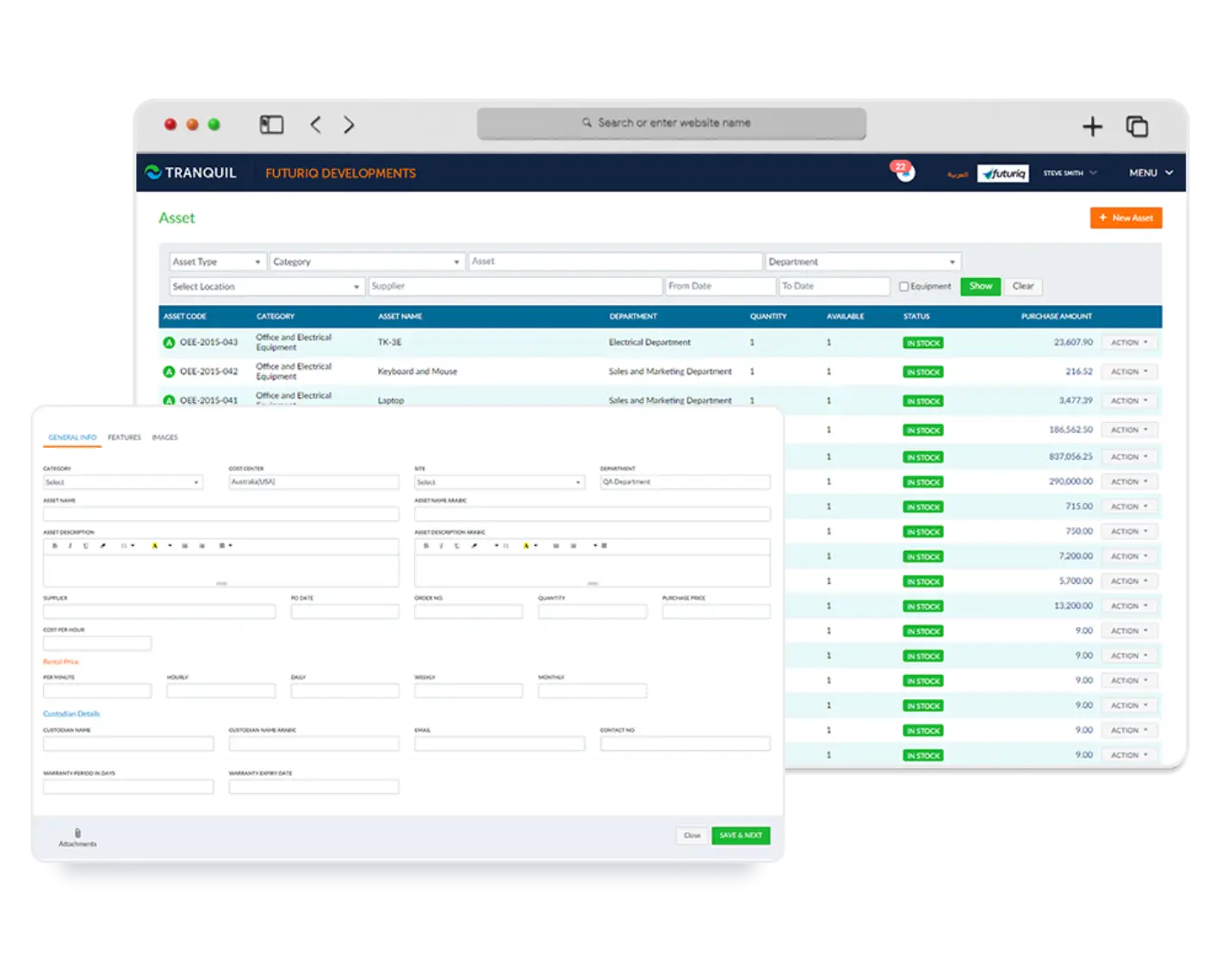

Track the status of your assets and ensure they are serviced at appropriate times to increase their operational efficiency and extend their lifecycle.
Avoid sudden breakdowns, downtimes, and expensive repairs.
Ensure continuous production and smooth workflows.
Maintain detailed records of each maintenance service and repair.
Frequently asked questions
Tranquil ERP software is a comprehensive cloud-based solution designed to empower contracting
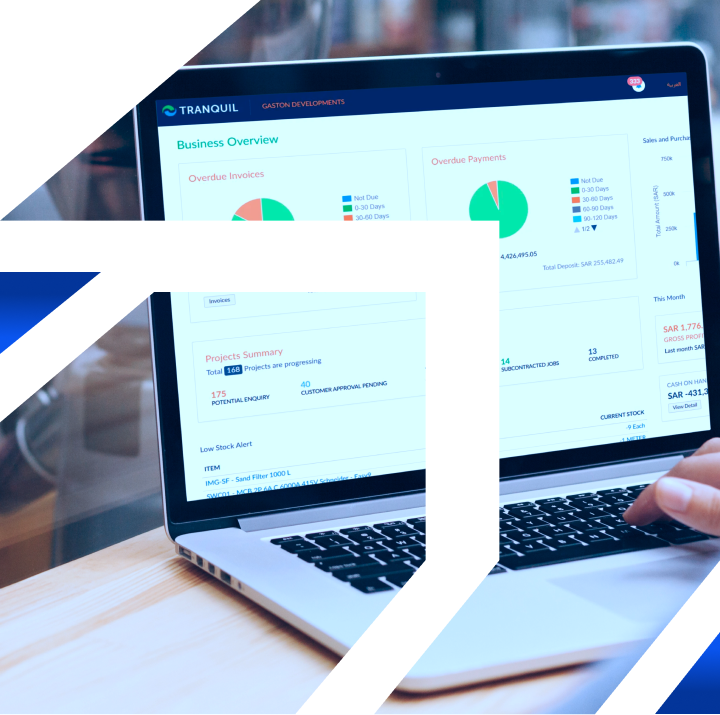

request for a free quote now
Automate and streamline your processes to put your Business in Overdrive – See first-hand how it works!



